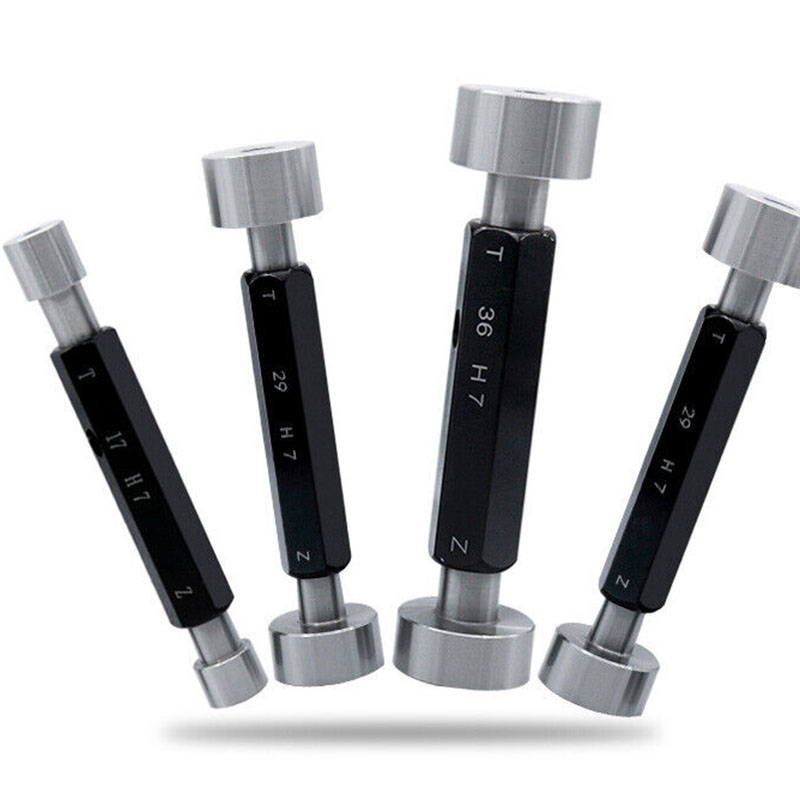డిసెం . 03, 2024 17:44 Back to list
plain plug gauge
Understanding Plain Plug Gauges An Essential Tool in Precision Measurement
In the field of mechanical engineering and manufacturing, precision is paramount. Every tiny deviation can lead to significant errors in functionality and durability, especially in parts that must fit and operate together. One commonly used instrument for ensuring such precision is the plain plug gauge. This article delves into the functions, applications, and benefits of using plain plug gauges in manufacturing processes.
What is a Plain Plug Gauge?
A plain plug gauge is a measuring tool designed to determine the dimensions of holes or recesses. Essentially, it is a cylindrical object that is precision-engineered to fit within a specific hole or bore. Plug gauges come in two forms go and no-go gauges. The go gauge is meant to fit into the hole, indicating that the dimensions are correct, while the no-go gauge should not fit; if it does, the dimensions are deemed out of tolerance. This binary method of measurement allows for quick and clear verification of part specifications.
Design and Construction
Plain plug gauges are typically made from high-quality materials like hardened steel or carbide to ensure durability and resist wear from repeated use. The gauge's accuracy is critical; hence, they are manufactured through stringent quality control processes, involving precision grinding to meet specified tolerances. The gauges are often marked with their nominal sizes, and they may also be provided with a calibration certificate, documenting their accuracy.
Applications of Plain Plug Gauges
Plain plug gauges find widespread application across various industries, including automotive, aerospace, and general manufacturing. They are particularly useful in establishing proper tolerances for threaded holes, ensuring that components can be fitted together seamlessly. These gauges are integral in processes where precise alignment is required, such as assembling engines, brackets, and mechanical parts.
plain plug gauge

Moreover, plug gauges are invaluable in quality control processes. Inspectors use them to measure the final product's dimensions against design specifications, ensuring compliance with engineering standards. Their simplicity enables fast measurement, which is essential in high-volume production settings.
Advantages of Using Plain Plug Gauges
One of the primary advantages of plain plug gauges is their simplicity and ease of use. Unlike electronic measuring devices, plug gauges do not require batteries or electronic components, making them less prone to failure and malfunction. They are also cost-effective, which is a significant consideration for many manufacturers.
Another benefit is the speed of inspection. In high-pressure manufacturing environments, the ability to quickly verify part dimensions helps maintain production flow and minimizes downtime. The straightforward design allows operators to quickly gauge whether a part is acceptable or needs further machining.
Furthermore, the use of plain plug gauges can enhance overall product quality. By routinely checking and calibrating with these tools, manufacturers can catch dimensional errors early in the production process, ultimately reducing waste and increasing efficiency.
Conclusion
In summary, plain plug gauges are indispensable tools in the world of manufacturing and engineering. Their straightforward design, coupled with their critical role in ensuring the accuracy of dimensions, makes them a vital component in the quality control toolkit. While advancements in technology continue to evolve measuring instruments, the reliability and efficiency of plain plug gauges solidify their place in precision measurement, ensuring that products not only meet design specifications but also function seamlessly in their intended applications. As we strive for higher standards in manufacturing and production, the importance of such tools will only continue to grow, emphasizing the need for precision in every component produced.
-
thread-plug-gauge-our-promise-of-measurement-excellenceNewsAug.22,2025
-
gauge-pin-class-reflecting-quality-legacyNewsAug.22,2025
-
check-valve-types-for-high-rise-buildingsNewsAug.22,2025
-
water-control-valve-for-irrigation-systemsNewsAug.22,2025
-
gate-valve-with-soft-seal-technologyNewsAug.22,2025
-
y-type-strainer-for-oil-and-gas-applicationsNewsAug.22,2025
Related PRODUCTS









